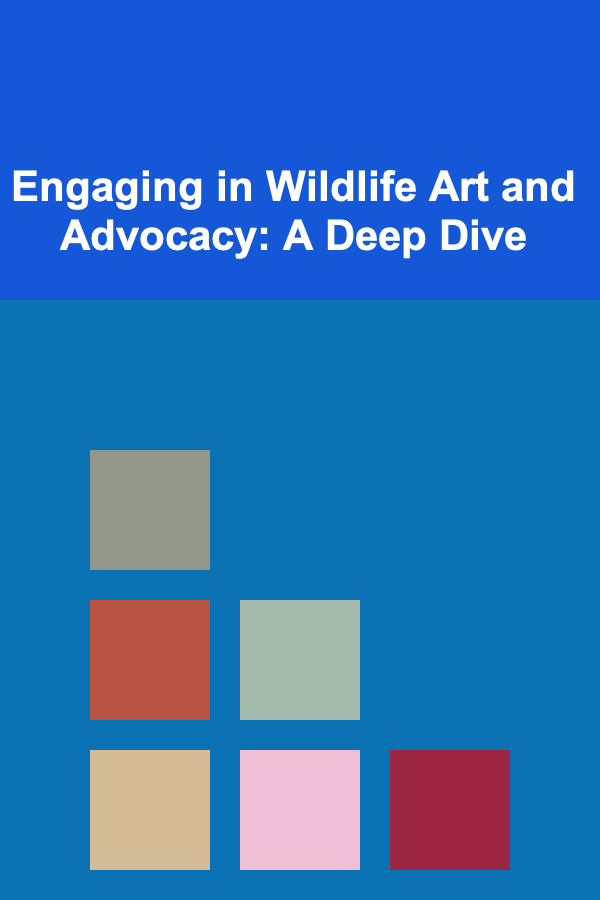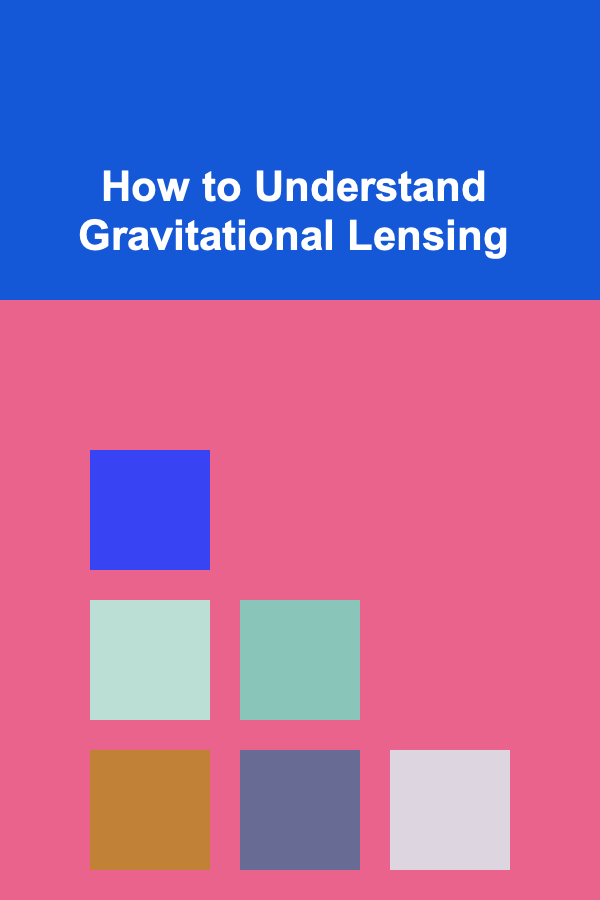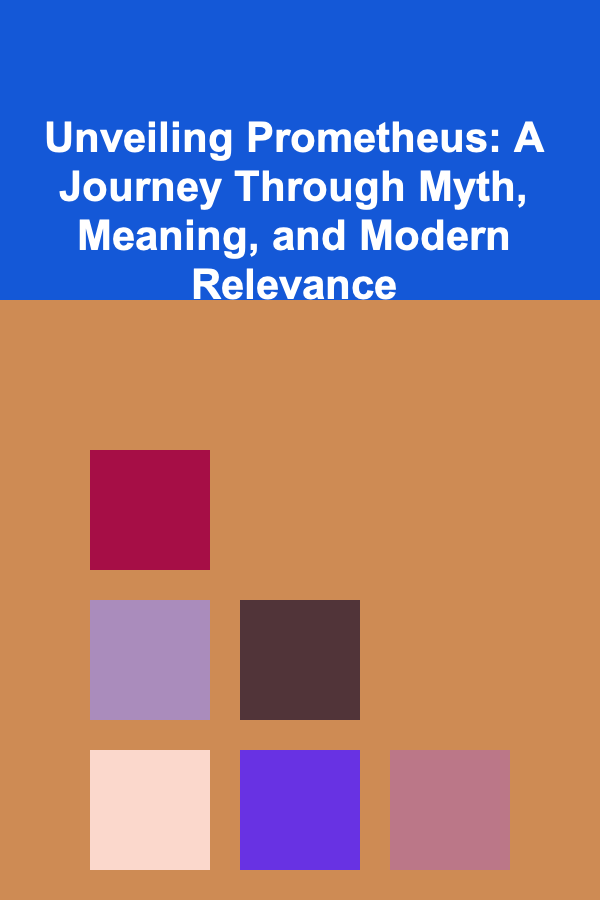
Engaging in Wildlife Art and Advocacy: A Deep Dive
ebook include PDF & Audio bundle (Micro Guide)
$12.99$10.99
Limited Time Offer! Order within the next:

Wildlife art and advocacy represent a powerful intersection of creativity, passion, and a deep concern for the natural world. It's more than just drawing pretty pictures of animals; it's about using artistic expression to raise awareness, inspire action, and contribute to the conservation of endangered species and threatened habitats. This article explores the multifaceted nature of engaging in wildlife art and advocacy, offering practical advice, inspiration, and a framework for making a meaningful impact.
The Power of Visual Storytelling
Humans are visual creatures. Images have the capacity to evoke emotions, spark empathy, and convey complex information in a way that words often cannot. Wildlife art, in all its forms -- painting, sculpture, photography, digital art, and more -- leverages this inherent power to connect people with the beauty and fragility of the natural world. A stunning photograph of a snow leopard in its remote mountain habitat can inspire awe and a desire to protect it. A poignant painting of a rescued orangutan can tug at the heartstrings and raise awareness about deforestation. A powerful sculpture depicting the skeletal remains of a coral reef can underscore the devastating effects of climate change.
Beyond aesthetics, wildlife art can act as a powerful form of documentation. Historically, artists like John James Audubon and Maria Sibylla Merian meticulously documented species that were previously unknown or poorly understood, contributing significantly to the fields of ornithology and entomology. Today, artists continue to play a vital role in documenting endangered species and habitats, providing a visual record for future generations.
Finding Your Artistic Voice
The first step in becoming a wildlife artist and advocate is to cultivate your artistic skills and find your unique voice. This involves:
- Honing Your Craft: Whether you prefer the precision of realism or the expressive freedom of abstract art, dedicate time to developing your technical skills. Take classes, attend workshops, practice regularly, and experiment with different mediums and techniques. Don't be afraid to challenge yourself and step outside of your comfort zone. Online resources like Skillshare, Domestika, and YouTube offer a wealth of tutorials and courses covering a wide range of artistic disciplines.
- Developing a Style: What makes your art unique? Do you have a particular subject matter that resonates with you? A distinctive approach to color, composition, or texture? Experiment with different styles and approaches until you find one that feels authentic and reflects your personality and perspective. Don't be afraid to draw inspiration from other artists, but strive to develop your own signature style.
- Studying Wildlife and Habitats: Accurate and compelling wildlife art requires a deep understanding of the anatomy, behavior, and ecology of the animals you depict. Spend time observing wildlife in their natural habitats, either in person or through documentaries, books, and online resources. Study their anatomy, movement, and interactions with their environment. This knowledge will not only enhance the realism of your art but also deepen your appreciation for the complexity and interconnectedness of the natural world.
- Embracing Continuous Learning: The world of art and conservation is constantly evolving. Stay up-to-date on the latest scientific discoveries, conservation challenges, and artistic trends. Attend conferences, read books and articles, follow influential artists and conservationists on social media, and engage in discussions with other members of the wildlife art community.
Understanding the Issues
Effective wildlife advocacy requires a solid understanding of the environmental issues facing the planet. This involves:
- Researching Conservation Challenges: Familiarize yourself with the major threats to biodiversity, such as habitat loss, climate change, poaching, pollution, and invasive species. Explore the specific challenges facing different regions and ecosystems, from the Amazon rainforest to the Arctic tundra. Reliable sources of information include scientific journals, reports from conservation organizations like the World Wildlife Fund (WWF) and the International Union for Conservation of Nature (IUCN), and reputable news outlets specializing in environmental reporting.
- Focusing on Specific Species or Ecosystems: While it's important to have a broad understanding of environmental issues, focusing on a specific species or ecosystem can make your advocacy efforts more targeted and effective. Choose a species or habitat that resonates with you personally and dedicate time to learning everything you can about it. This focused approach will allow you to develop a deeper understanding of the challenges it faces and identify the most effective ways to contribute to its conservation.
- Learning About Conservation Strategies: Investigate the various strategies being used to address conservation challenges, such as habitat restoration, anti-poaching patrols, community-based conservation programs, and policy advocacy. Understand the strengths and limitations of each approach and consider how your art can support these efforts.
- Understanding the Socio-Economic Context: Conservation challenges are often intertwined with complex socio-economic issues. Understanding the needs and perspectives of local communities is crucial for developing effective and sustainable solutions. Consider the impact of conservation efforts on local livelihoods and explore ways to promote economic development that benefits both people and wildlife.
Choosing Your Advocacy Path
There are many ways to use your art to advocate for wildlife. Here are some possibilities:
- Creating Art with a Message: Infuse your artwork with messages that raise awareness about conservation issues. This could involve depicting endangered species in their threatened habitats, illustrating the impact of pollution on wildlife, or creating images that celebrate the beauty and resilience of the natural world. Consider adding text or captions to your artwork to provide context and further emphasize your message.
- Donating Art to Conservation Organizations: Many conservation organizations hold auctions and fundraisers to support their work. Donating your art to these events can be a valuable way to raise money for conservation efforts. Research organizations whose mission aligns with your values and contact them to inquire about donation opportunities.
- Selling Art to Support Conservation: Dedicate a portion of the proceeds from the sale of your art to conservation organizations. This can be a powerful way to directly contribute to conservation efforts while also raising awareness among your buyers. Be transparent about your giving practices and let your customers know that their purchase is supporting a worthy cause.
- Participating in Art Exhibitions and Festivals: Seek out art exhibitions and festivals that focus on wildlife or environmental themes. These events provide a platform to showcase your work, connect with other artists and conservationists, and reach a wider audience.
- Using Social Media to Spread Awareness: Social media platforms like Instagram, Facebook, and Twitter are powerful tools for sharing your art and messages with a global audience. Use social media to showcase your artwork, share information about conservation issues, and engage in discussions with other users. Use relevant hashtags to increase the visibility of your posts and connect with like-minded individuals and organizations.
- Collaborating with Conservation Organizations: Partner with conservation organizations to create art for their campaigns and educational materials. This could involve designing posters, illustrations for websites, or artwork for social media posts. Collaborating with organizations can amplify your message and reach a wider audience.
- Creating Educational Resources: Develop educational resources, such as coloring books, posters, or interactive websites, that teach children and adults about wildlife and conservation. These resources can be used in schools, museums, and nature centers to raise awareness and inspire action.
- Speaking Engagements and Workshops: Share your knowledge and passion for wildlife art and advocacy by giving presentations and workshops at schools, community centers, and conservation events. This allows you to connect with people directly and inspire them to become involved in conservation efforts.
- Lobbying and Political Advocacy: Use your art to influence policy decisions related to wildlife conservation. Create artwork that highlights the importance of protecting endangered species and habitats, and share it with elected officials and policymakers. Participate in advocacy campaigns and encourage others to do the same.
Building a Community
Wildlife art and advocacy is most effective when it's a collaborative effort. Connecting with other artists, conservationists, and community members can amplify your impact and provide support and inspiration. This includes:
- Joining Art and Conservation Organizations: Become a member of organizations that focus on wildlife art, conservation, or both. These organizations provide opportunities to network with other artists and conservationists, participate in exhibitions and events, and learn about the latest developments in the field. Examples include the Society of Animal Artists, Artists for Conservation, and local Audubon Societies.
- Attending Conferences and Workshops: Attend conferences and workshops that focus on wildlife art, conservation, or environmental issues. These events provide opportunities to learn from experts, share your work, and connect with other professionals in the field.
- Participating in Online Forums and Communities: Engage in online forums and communities dedicated to wildlife art and conservation. These platforms provide a space to share your work, ask questions, and connect with other artists and conservationists from around the world.
- Collaborating with Other Artists: Work with other artists on collaborative projects that promote wildlife conservation. This could involve creating a joint exhibition, designing a mural, or producing a short film. Collaborating with other artists can broaden your perspective and enhance the impact of your work.
- Mentoring Aspiring Artists: Share your knowledge and experience with aspiring wildlife artists. Offer guidance, feedback, and encouragement to help them develop their skills and pursue their passion for wildlife art and advocacy.
Ethical Considerations
Engaging in wildlife art and advocacy comes with ethical responsibilities. It's important to:
- Respect Wildlife and Their Habitats: Avoid disturbing wildlife or damaging their habitats while observing or photographing them. Follow ethical wildlife photography guidelines and prioritize the well-being of the animals over getting the perfect shot. Obtain necessary permits and permissions before entering protected areas.
- Accurately Represent Wildlife and Their Habitats: Strive for accuracy in your depiction of wildlife and their habitats. Avoid exaggerating or misrepresenting information to create a more dramatic effect. Base your artwork on thorough research and accurate observations.
- Give Credit to Your Sources: Acknowledge the sources of your information and inspiration. Give credit to photographers, scientists, and other experts who have contributed to your knowledge of wildlife and conservation.
- Avoid Exploitation: Be mindful of the potential for exploitation in your work. Avoid creating artwork that glorifies hunting or promotes the consumption of endangered species. Use your art to advocate for the protection and conservation of wildlife, not to profit from their exploitation.
- Support Sustainable Practices: Use sustainable art materials and practices whenever possible. Choose eco-friendly paints, papers, and canvases. Recycle and reuse materials to minimize your environmental impact. Promote sustainable practices in your art community.
Measuring Your Impact
While the impact of art can be difficult to quantify, it's important to consider how your work is contributing to conservation efforts. This can be done by:
- Tracking Donations and Sales: Keep track of the amount of money you have donated to conservation organizations through the sale of your art. This provides a tangible measure of your financial contribution.
- Monitoring Social Media Engagement: Track the reach and engagement of your social media posts related to wildlife and conservation. Monitor the number of likes, shares, and comments your posts receive to gauge their impact.
- Gathering Feedback from Audiences: Seek feedback from audiences about the impact of your art. Ask them what they learned, how they were inspired, and what actions they are taking as a result of seeing your work.
- Tracking Media Coverage: Monitor media coverage of your artwork and advocacy efforts. This can provide a measure of your reach and influence.
- Collecting Anecdotal Evidence: Collect anecdotal evidence of the impact of your work. For example, document stories of people who have been inspired to take action for wildlife conservation after seeing your art.
- Collaborating with Researchers: Partner with researchers to conduct studies on the impact of wildlife art on public attitudes and behaviors related to conservation.
Conclusion
Engaging in wildlife art and advocacy is a powerful way to combine your passion for art with your commitment to conservation. By honing your artistic skills, understanding the issues, choosing your advocacy path, building a community, and adhering to ethical considerations, you can make a meaningful contribution to the protection of wildlife and their habitats. Remember that every effort, no matter how small, can make a difference. Embrace the power of visual storytelling and use your art to inspire action, raise awareness, and create a more sustainable future for all.
The journey of a wildlife artist and advocate is a continuous process of learning, growing, and evolving. Embrace the challenges, celebrate the successes, and never lose sight of the beauty and fragility of the natural world. Your art has the power to make a difference.

How to Build a Customer Feedback Management Checklist for Cross-Department Collaboration
Read More
How to Plan a Vacation on a Tight Budget
Read More
How to Reduce Noise Between Rooms with Simple Soundproofing Solutions
Read More
How to Understand Gravitational Lensing
Read More
How To Create Engaging Email Newsletters for Your Small Business
Read More
Unveiling Prometheus: A Journey Through Myth, Meaning, and Modern Relevance
Read MoreOther Products

How to Build a Customer Feedback Management Checklist for Cross-Department Collaboration
Read More
How to Plan a Vacation on a Tight Budget
Read More
How to Reduce Noise Between Rooms with Simple Soundproofing Solutions
Read More
How to Understand Gravitational Lensing
Read More
How To Create Engaging Email Newsletters for Your Small Business
Read More